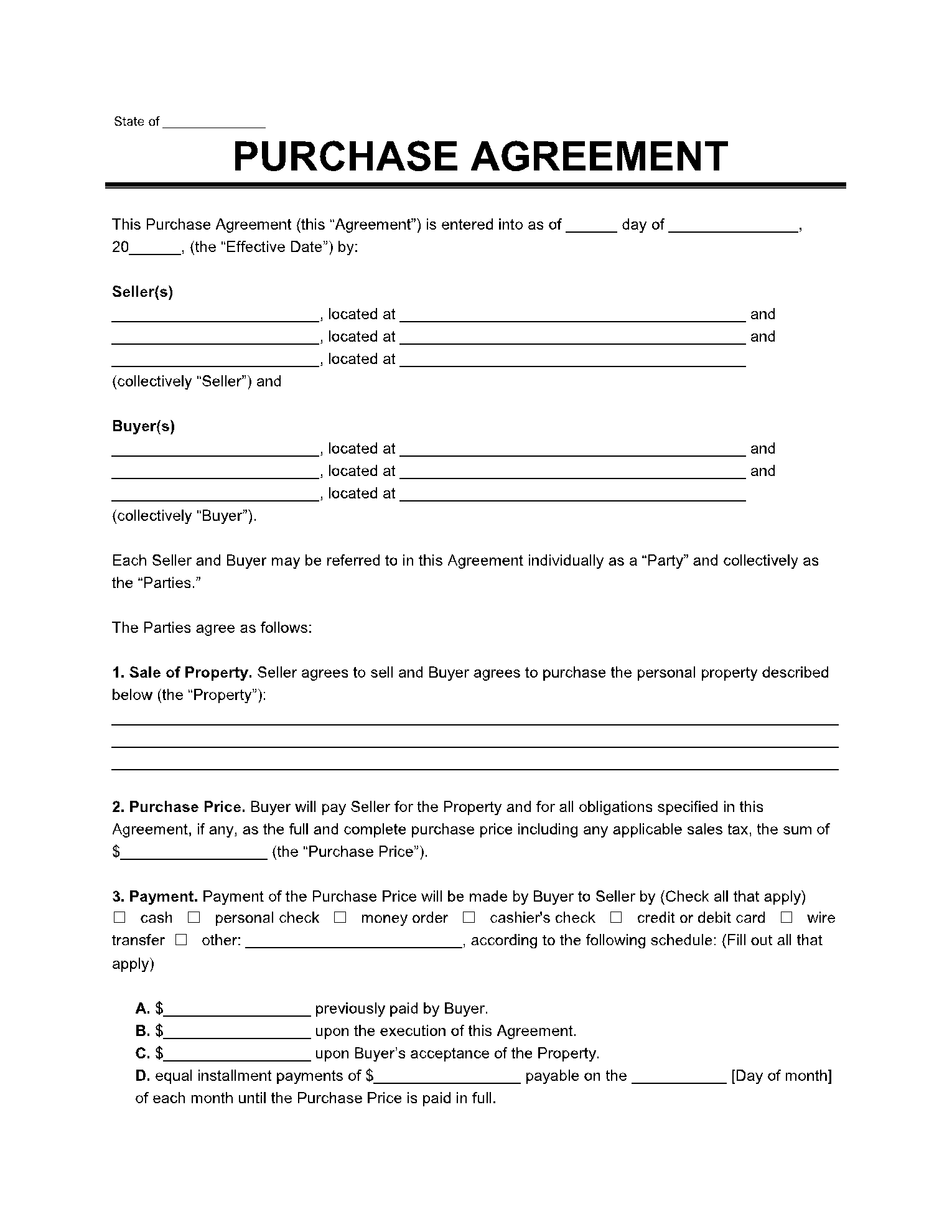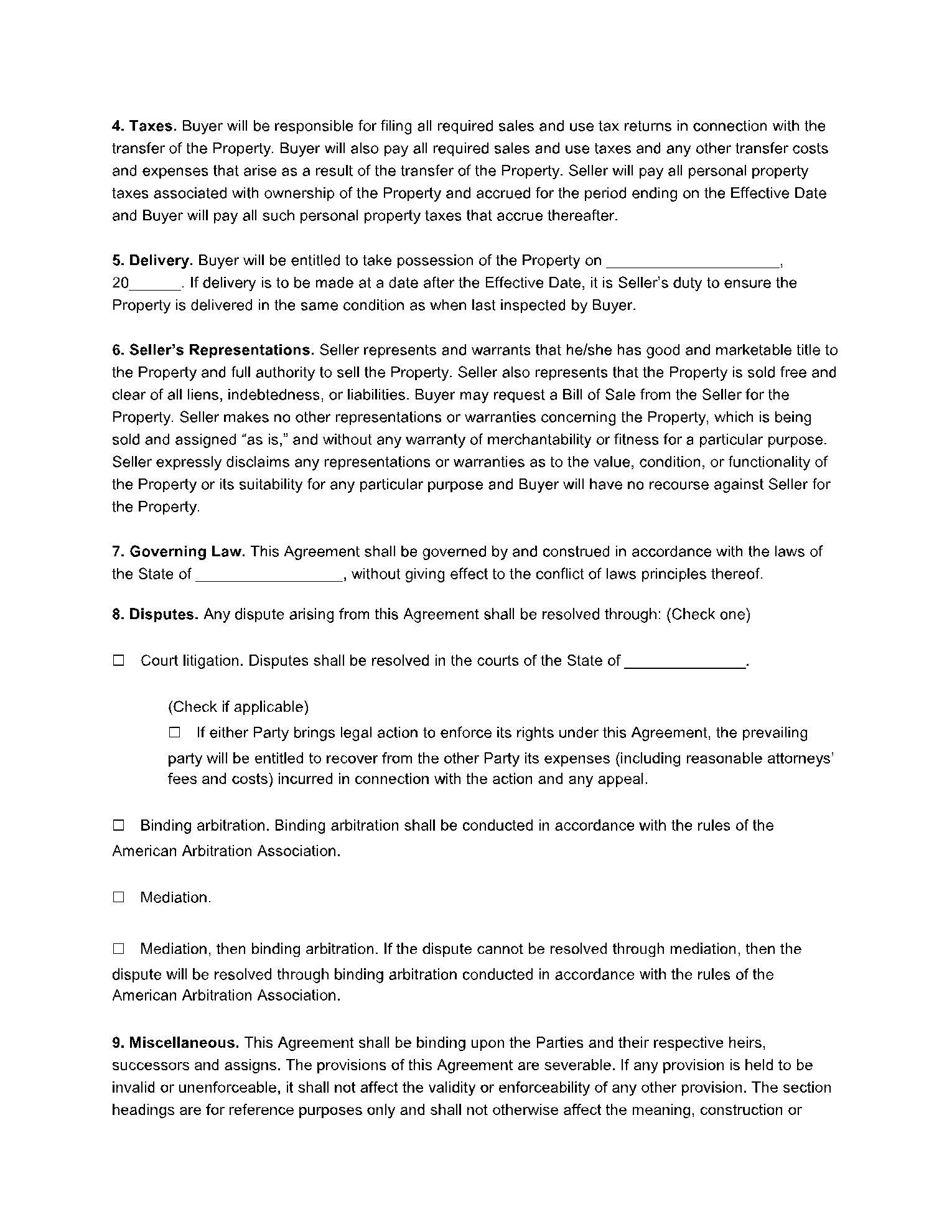People use purchase agreements to set the terms of a future real estate transaction, as they offer a level of security for both parties. But sometimes, before the sale can be finalized, some changes occur; if both parties agree to the modifications, they issue an addendum to purchase agreement, mentioning what changes.
That addendum and its specifications must be attached to the original agreement and become part of it. The purchase agreement addendum is an addition to the original deal, bringing corrections or changing dates and terms, as long as both parties agree to the modifications and sign the document.
Following are the key inclusions of the template of the agreement of purchase addendum that you should know about.
-
- Buyer and seller information
- Property details
- Fixtures and appliances included/excluded in the sale
- Closing and possession dates
- Pricing and Financing
- Earnest money deposit amount
- Closing costs and who is responsible for paying
What Is a Purchase Agreement Addendum?
Real estate transactions include many aspects that the two parties must agree on. And not all those aspects can be entirely foreseen from the beginning, so many times, people need a purchase agreement addendum to change the original agreement in a mutually beneficial way.
The real estate addendum form either brings new information to the purchase agreement, something that was originally left out, or modifies some of the original stipulations. In any case, the addendum has the power to override the initial mentions, once it’s annexed to the original document.
Either party can request to issue an addendum, for whatever reason they need, but it has to be mutually accepted. It can be a release of earnest money form, a seller financing addendum, a change of dates, or something as simple as asking the seller to leave certain appliances or pieces of equipment on the property.
Types of Addendum
The purchase agreement addendum can contain any mentions both parties consider necessary, but in practice, some modifications occur more frequently. These are the types of addendum people usually need:
Why Do You Need a Purchase Agreement Addendum?
People use an addendum to purchase agreement when they need to make an adjustment to the original agreement, by adding an extra clause or modifying an existing one. Not all the elements involved in the purchase are clear from the start, as the purchase agreement is a preliminary document.
So, along the way, one or both parties may need to make changes. Here are a few examples of situations when a purchase agreement addendum is more frequently used:
- If the buyer decides they want to share the closing costs with the seller
- If the buyer wants all the appliances or part of them to be included in the purchase
- If both parties want to mention how to handle contingencies clearly. An example is when the buyer needs to get a loan to pay for the property; if they fail, the addendum will specify how the contingency will be resolved
- The ‘as is’ addendum is used when the buyer agrees to get the property in its current conditions, without demanding repairs
Regardless of what the addendum mentions or who required it, it only becomes valid if both parties sign it. From that moment, it becomes part of the purchase agreement and overrides and pre-existing mentions concerning the same issue.
Conclusion
The terms of a real estate transaction may need to be changed sometimes, even after the purchase agreement is signed. An inspection or a delay in obtaining a loan can cause one of the parties to want to modify the purchase agreement. But that cannot be done by just scratching the unwanted part of the document.
You need to issue a purchase agreement addendum, a formal document that mentions the changes. It needs to be carefully written and signed by both the seller and the buyer. To create an efficient real estate addendum form, use the template we have at CocoSign. It’s one of the many useful templates we provide, to make creating any type of document an easy task.


